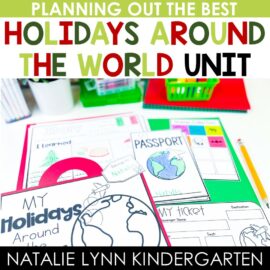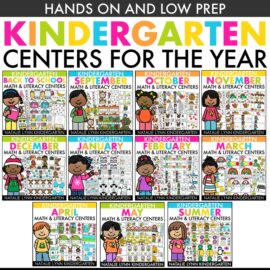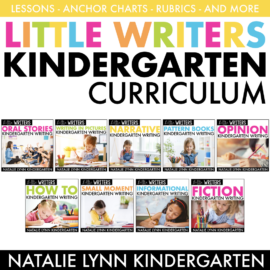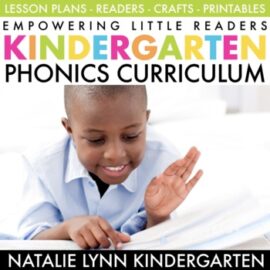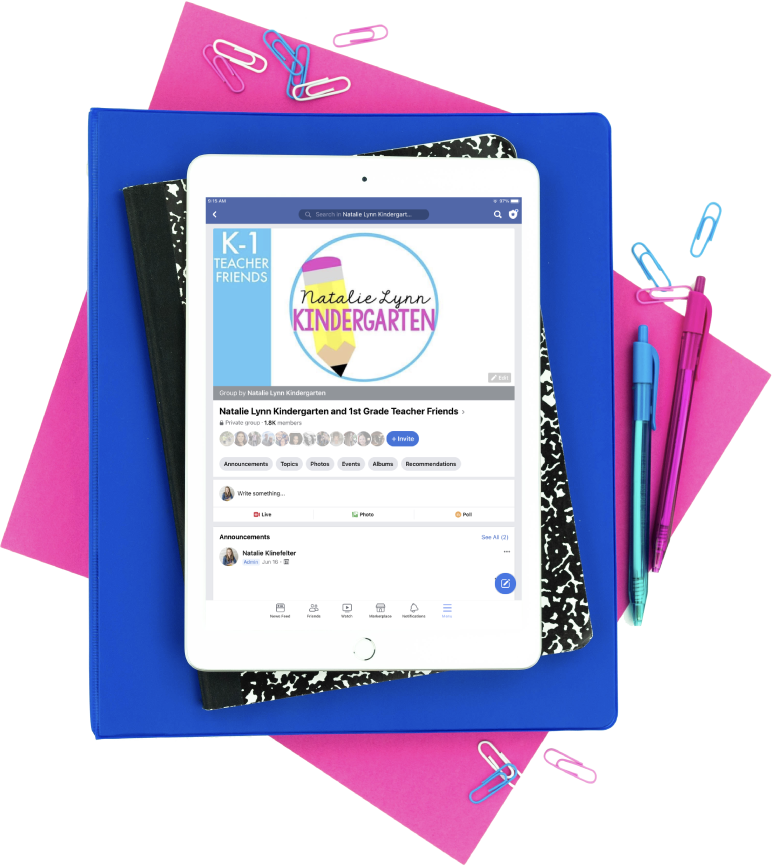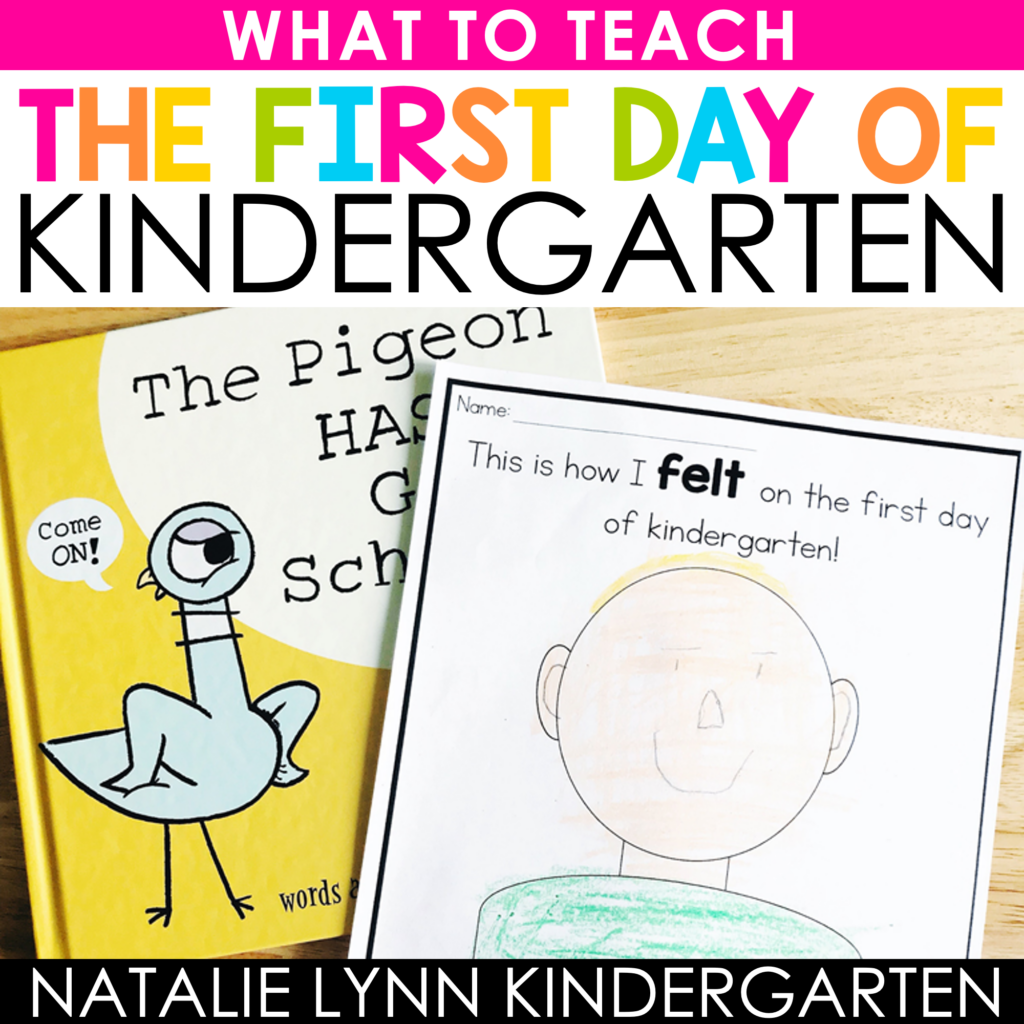
The beginning of the school year is quickly approaching as is the first day of kindergarten for many of your soon-to-be-students. They’re likely feeling a bundle of nerves as they prepare to start school, some of them for the first time. But your students may not be the only ones feeling those nerves. You may be feeling them too! And that’s okay!
If you aren’t sure where to begin with your kindergarten students this back to school season, you’re in luck. In this post, I share all of my tips for starting the first day of kindergarten off right!
Student Arrival: What Should My Students Be Doing?

Every teacher has a different way of how they like to start the first day of kindergarten, but for me personally, I love to start off by allowing my students to color. If you’ve been around for a bit, you know that I love morning tubs, but for the first day, I want something a little simpler for all of us.
Letting students color is an easy way to start the first day of kindergarten. It doesn’t require several expectations to be taught and it isn’t threatening or overwhelming for students. Plus, it allows you to observe fine motor skills and informally assess name writing.
You can grab this free first day of kindergarten coloring sheet here.
(Teacher Tip – Don’t let students use their own crayons yet, though! Instead, put out trays of used crayons from previous years. You don’t want students getting their personal set of crayons until I have taught them how to use that supply.)
If students finish early, you can have them color a different page or put out baskets of books for them to look through. Having these things ready ahead of time allows you to greet students, answer parent questions, and handle any other first day of school business.
Student Arrival: What Should I Be Doing?
While students are coloring, you can greet students and their families. Since students are occupied, this allows you to answer questions or soothe any fears that students may have.
(Teacher Tip – Keep inexpensive stuffed animals to give to students scared to start kindergarten. It may be enough just to let them hold one. If you need to, send one of the stuffed animals home and allow the student to bring it back the next day. It keeps getting easier and easier!)
Transitioning to the Carpet
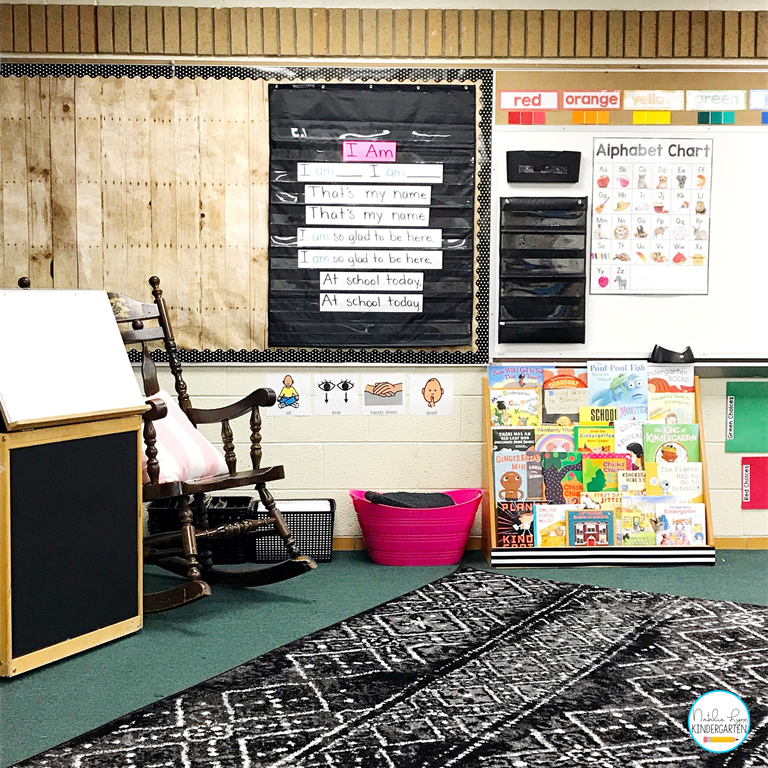
Teaching kindergartners to come to the carpet and sit is an art. And not only that, but it’s something that requires a lot of practice. But hey, practice makes perfect!
When it’s time to clean up from breakfast:
- Have students freeze.
- Show them your attention-getter.
- Have students practice listening and freezing a few times.
- Show students how to clean up their breakfast.
- Have students clean up their breakfast and sit back in their seats.
- Model how to stand and push in their chairs.
- Have students practice standing and pushing in our chairs.
- Model how to walk to the carpet and sit.
- Have one table at a time go to the carpet to sit.
This may seem like overkill, but I’m telling you – model every. little. thing. Give specific directions for every. little thing.
You can read a little more about how I teach students carpet expectations here.
Reading Picture Books

Going through a very simple morning meeting routine with students once they arrive at the carpet – just a greeting, deep breathing exercise, reading the morning message, and then a brain break – is a simple way to help students know what to expect.
After students are settled, grab a back to school book from your bookshelf. This can be a book you have planned ahead of time or any book on your bookshelf.
Books are a great way to break up a day full of learning routines and expectations! I recommend following a schedule something like this: book, brain break, teach, recess, book, brain break, teach, recess.
Using Supplies

You won’t be able to teach every single supply on the first day of kindergarten, so I suggest starting with what is most important to you. To me, crayons are the most important supply.
When modeling how to use a supply, model how to use it and how not to use it. Talk about what crayons, pencils, etc. can write or color on and what they cannot write or color on. (It might seem silly, but trust me, it’s not.)
Then, allow your students to practice by coloring! The coloring page above is from this Back to Kindergarten pack.
Lining Up
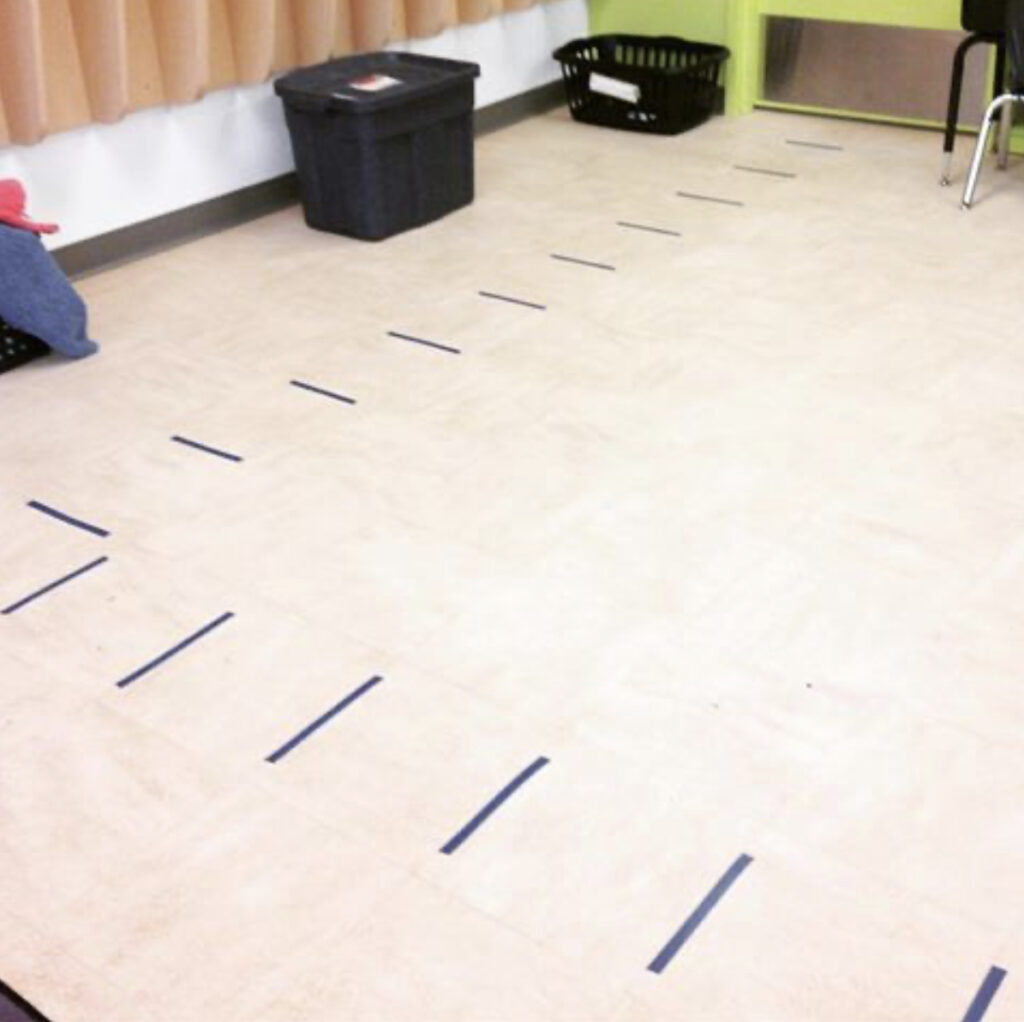
When recess time rolls around, students need to know how to line up and walk in the hallway quietly, so it’s something you definitely want to focus on for the first day of kindergarten.
You can read more about how I teach my students to line up here.
Explain to students the importance of being quiet and not disturbing other classes because that would be rude to them. They understand that!
(Teacher Tip – Talk about being so quiet and sneaky in the hallway that your class is like ninjas! Students take that very seriously.)
Practice walking in the hallway first with tons of whispered praise from you (Oh my gosh! You are the quietest class I’ve ever seen! No one knows you’re in the hall!).
Then, have your students come back and sit down… only to immediately line back up for recess!
Using Scissors
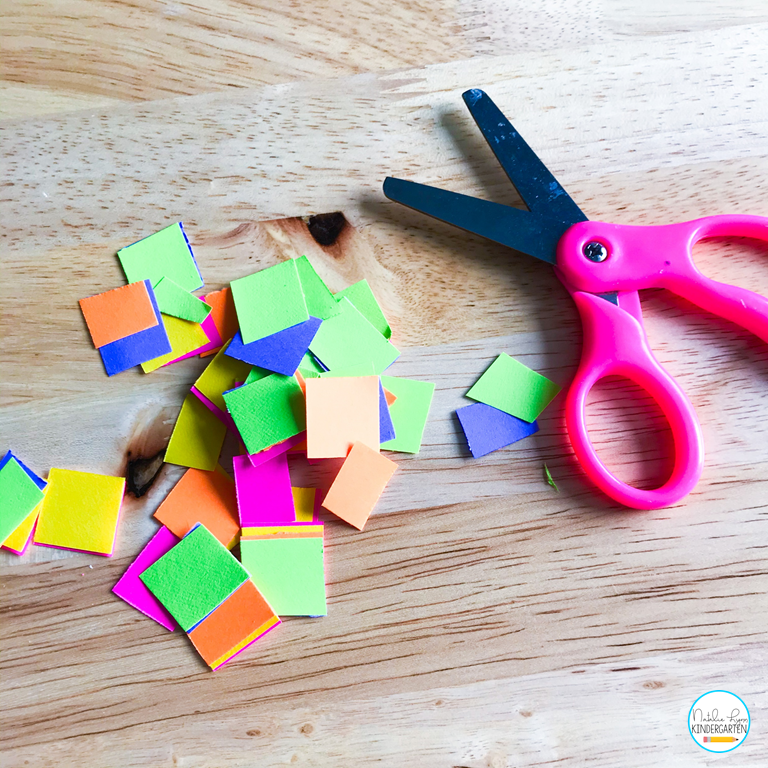
When teaching your students how to use scissors, model again how to use scissors safely and what would not be safe. Show students the “thumbs up!” rule for using scissors and how to open and shut them.
To allow students to practice consider giving your students strips of colorful paper and letting them go to town! They can cut as much as they can into baskets on their table and the scraps can be used for future crafts.
During this time, you can walk around and correct students’ scissor grip.
Using Glue

Whether you’re using glue sponges or glue sticks, again model exactly how you want your students to use the glue.

To practice, you can have students practice filling in these hearts from my Back to Kindergarten pack! You can let students use the paper pieces they cut earlier, or let them tear paper.
First Day Feelings
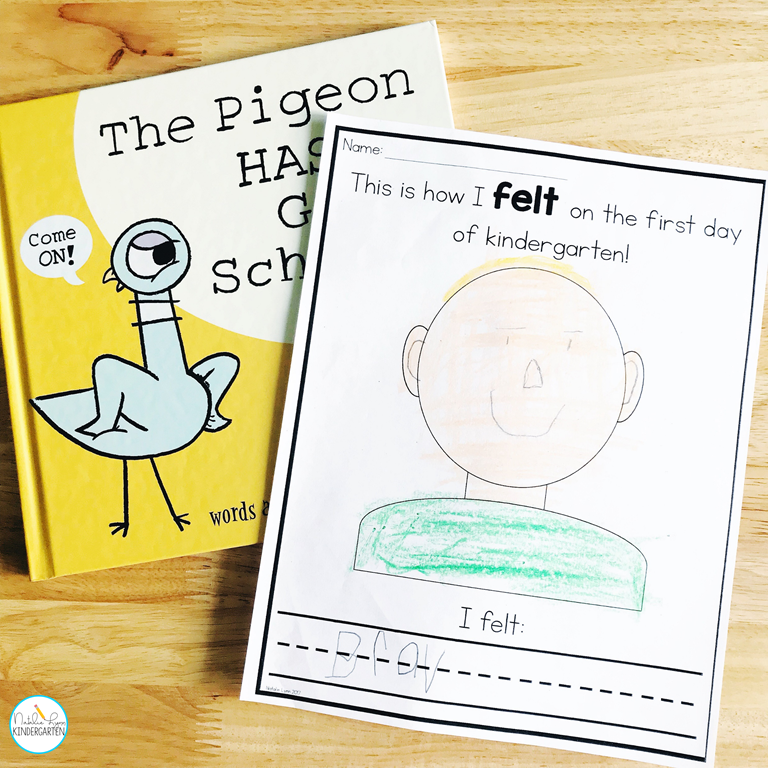
Note – This writing is from the end of the year, not the beginning! I have my students repeat this when we talk about how they are feeling about 1st grade.
Because the first day of school can be such an emotional time for students, I’ve found that reading a book about first day feelings is helpful. For writing time, read a book about first day feelings and discuss how students were feeling at the beginning of the school day. You can show them some examples of emotions on posters.
Then, students illustrate their first day feelings. You may even have some who surprise you and attempt to write a word here!
Ending With Play

By the afternoon, my students are DONE so it’s the perfect time to play! I fill baskets with manipulatives, whiteboards, and building toys and let them choose a table to sit at and explore.
This is a great time to just sit and get to know your new class!
Once you’re reading to prepare for dismissal, practice packing up – model each step from getting their backpacks, to getting their folders, to putting it in the backpack, to zipping it up, to sitting on the carpet.
(Teacher Tip – Don’t forget to check student backpacks for supplies and tag them with how they are getting home. I usually do this during Specials!)
I suggest dedicating a LOT of time to pack up the first few days! Practice makes perfect.
Do you have any questions or suggestions about the first day of kindergarten? Leave them below! And if you’re looking for a no-prep pack with everything you need for the first day, check out my Back to Kindergarten pack.


